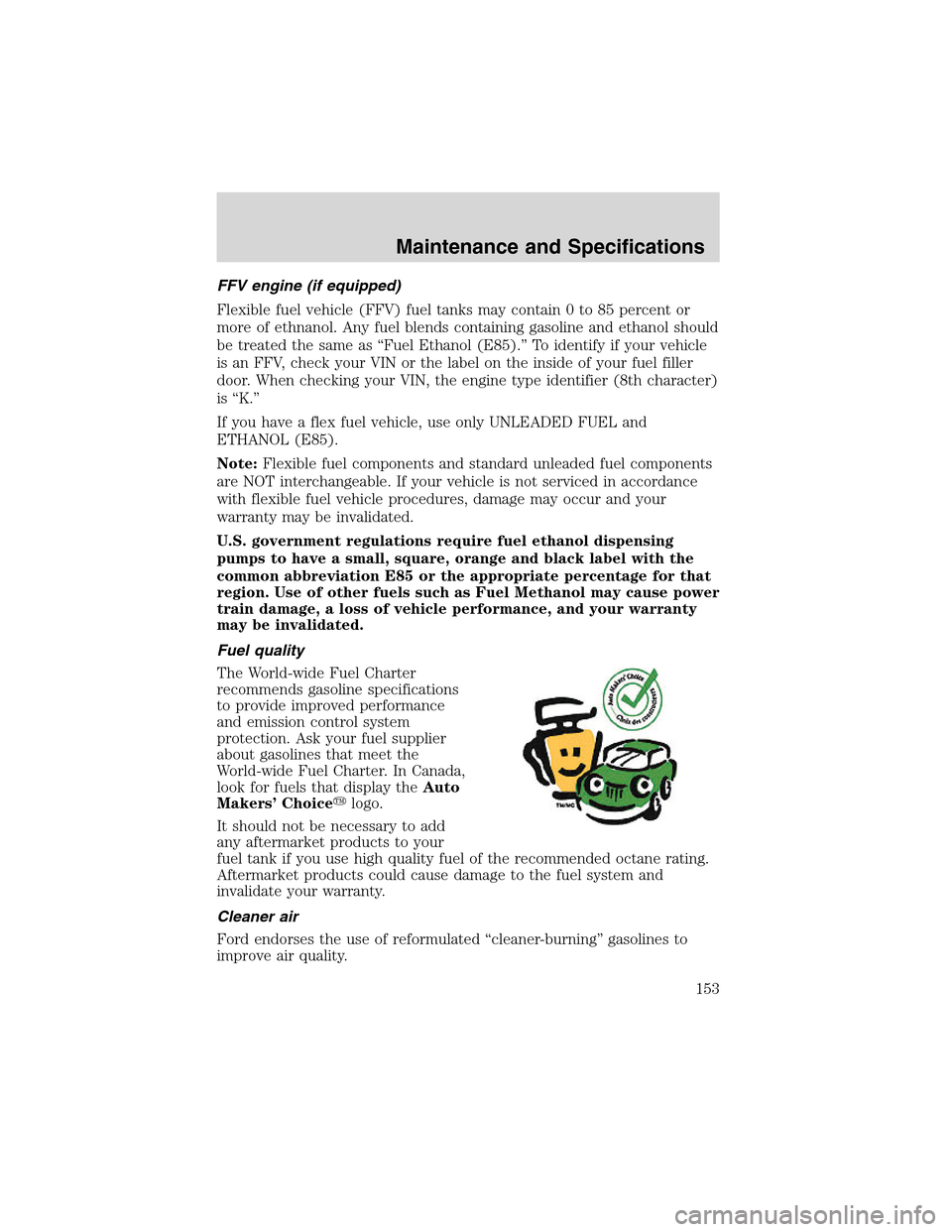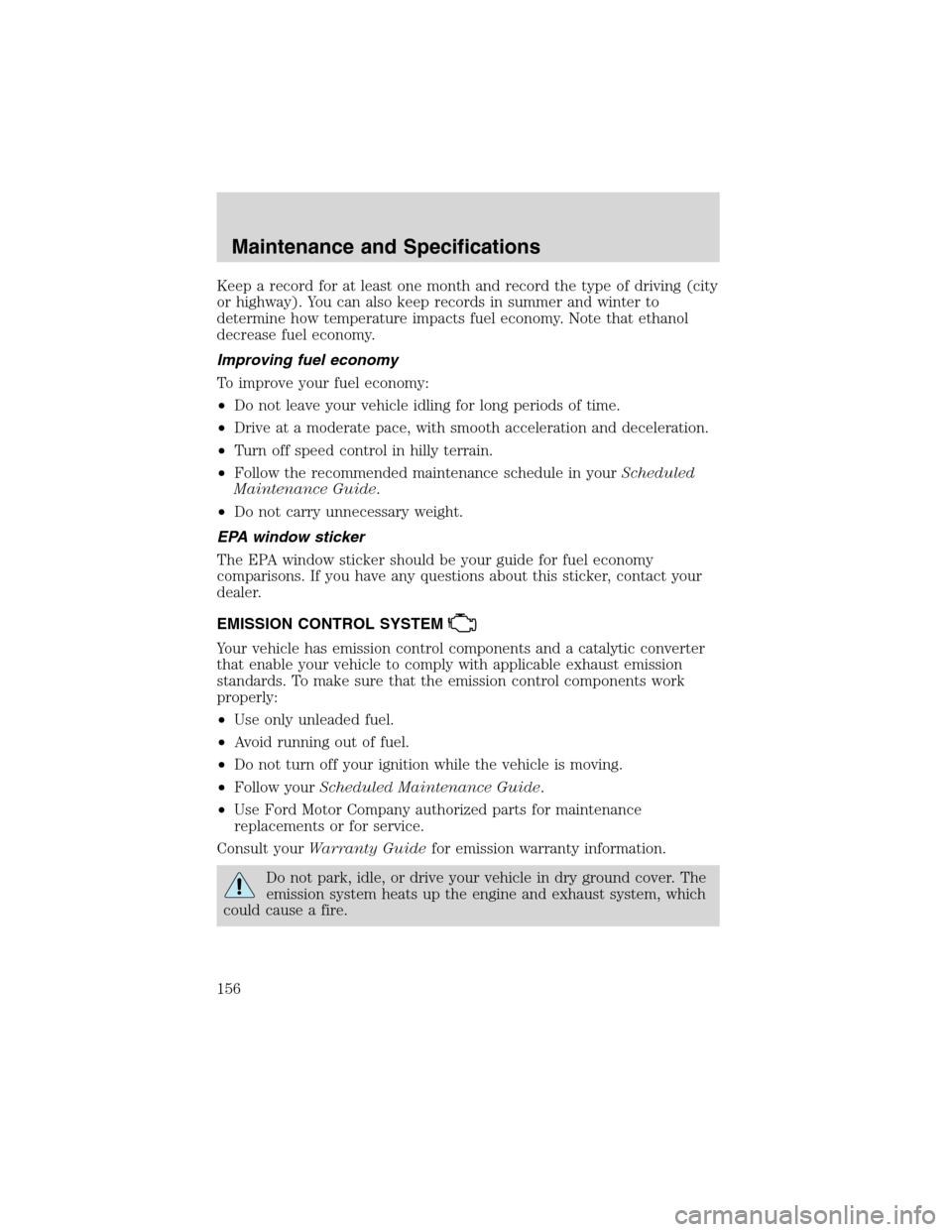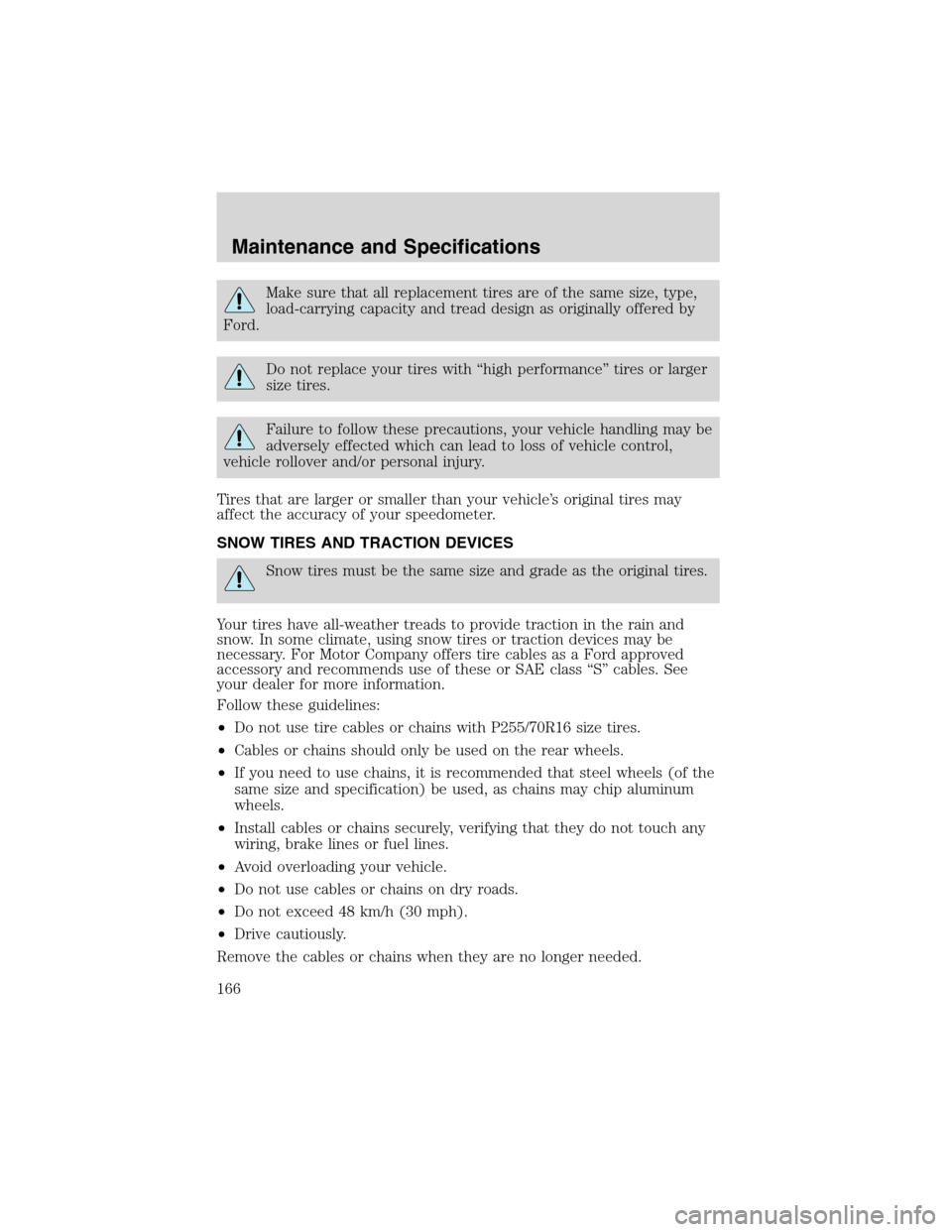Page 153 of 184

FFV engine (if equipped)
Flexible fuel vehicle (FFV) fuel tanks may contain 0 to 85 percent or
more of ethnanol. Any fuel blends containing gasoline and ethanol should
be treated the same as“Fuel Ethanol (E85).”To identify if your vehicle
is an FFV, check your VIN or the label on the inside of your fuel filler
door. When checking your VIN, the engine type identifier (8th character)
is“K.”
If you have a flex fuel vehicle, use only UNLEADED FUEL and
ETHANOL (E85).
Note:Flexible fuel components and standard unleaded fuel components
are NOT interchangeable. If your vehicle is not serviced in accordance
with flexible fuel vehicle procedures, damage may occur and your
warranty may be invalidated.
U.S. government regulations require fuel ethanol dispensing
pumps to have a small, square, orange and black label with the
common abbreviation E85 or the appropriate percentage for that
region. Use of other fuels such as Fuel Methanol may cause power
train damage, a loss of vehicle performance, and your warranty
may be invalidated.
Fuel quality
The World-wide Fuel Charter
recommends gasoline specifications
to provide improved performance
and emission control system
protection. Ask your fuel supplier
about gasolines that meet the
World-wide Fuel Charter. In Canada,
look for fuels that display theAuto
Makers’Choice�logo.
It should not be necessary to add
any aftermarket products to your
fuel tank if you use high quality fuel of the recommended octane rating.
Aftermarket products could cause damage to the fuel system and
invalidate your warranty.
Cleaner air
Ford endorses the use of reformulated“cleaner-burning”gasolines to
improve air quality.
Maintenance and Specifications
153
Page 156 of 184

Keep a record for at least one month and record the type of driving (city
or highway). You can also keep records in summer and winter to
determine how temperature impacts fuel economy. Note that ethanol
decrease fuel economy.
Improving fuel economy
To improve your fuel economy:
•Do not leave your vehicle idling for long periods of time.
•Drive at a moderate pace, with smooth acceleration and deceleration.
•Turn off speed control in hilly terrain.
•Follow the recommended maintenance schedule in yourScheduled
Maintenance Guide.
•Do not carry unnecessary weight.
EPA window sticker
The EPA window sticker should be your guide for fuel economy
comparisons. If you have any questions about this sticker, contact your
dealer.
EMISSION CONTROL SYSTEM
Your vehicle has emission control components and a catalytic converter
that enable your vehicle to comply with applicable exhaust emission
standards. To make sure that the emission control components work
properly:
•Use only unleaded fuel.
•Avoid running out of fuel.
•Do not turn off your ignition while the vehicle is moving.
•Follow yourScheduled Maintenance Guide.
•Use Ford Motor Company authorized parts for maintenance
replacements or for service.
Consult yourWarranty Guidefor emission warranty information.
Do not park, idle, or drive your vehicle in dry ground cover. The
emission system heats up the engine and exhaust system, which
could cause a fire.
Maintenance and Specifications
156
Page 166 of 184

Make sure that all replacement tires are of the same size, type,
load-carrying capacity and tread design as originally offered by
Ford.
Do not replace your tires with“high performance”tires or larger
size tires.
Failure to follow these precautions, your vehicle handling may be
adversely effected which can lead to loss of vehicle control,
vehicle rollover and/or personal injury.
Tires that are larger or smaller than your vehicle’s original tires may
affect the accuracy of your speedometer.
SNOW TIRES AND TRACTION DEVICES
Snow tires must be the same size and grade as the original tires.
Your tires have all-weather treads to provide traction in the rain and
snow. In some climate, using snow tires or traction devices may be
necessary. For Motor Company offers tire cables as a Ford approved
accessory and recommends use of these or SAE class“S”cables. See
your dealer for more information.
Follow these guidelines:
•Do not use tire cables or chains with P255/70R16 size tires.
•Cables or chains should only be used on the rear wheels.
•If you need to use chains, it is recommended that steel wheels (of the
same size and specification) be used, as chains may chip aluminum
wheels.
•Install cables or chains securely, verifying that they do not touch any
wiring, brake lines or fuel lines.
•Avoid overloading your vehicle.
•Do not use cables or chains on dry roads.
•Do not exceed 48 km/h (30 mph).
•Drive cautiously.
Remove the cables or chains when they are no longer needed.
Maintenance and Specifications
166